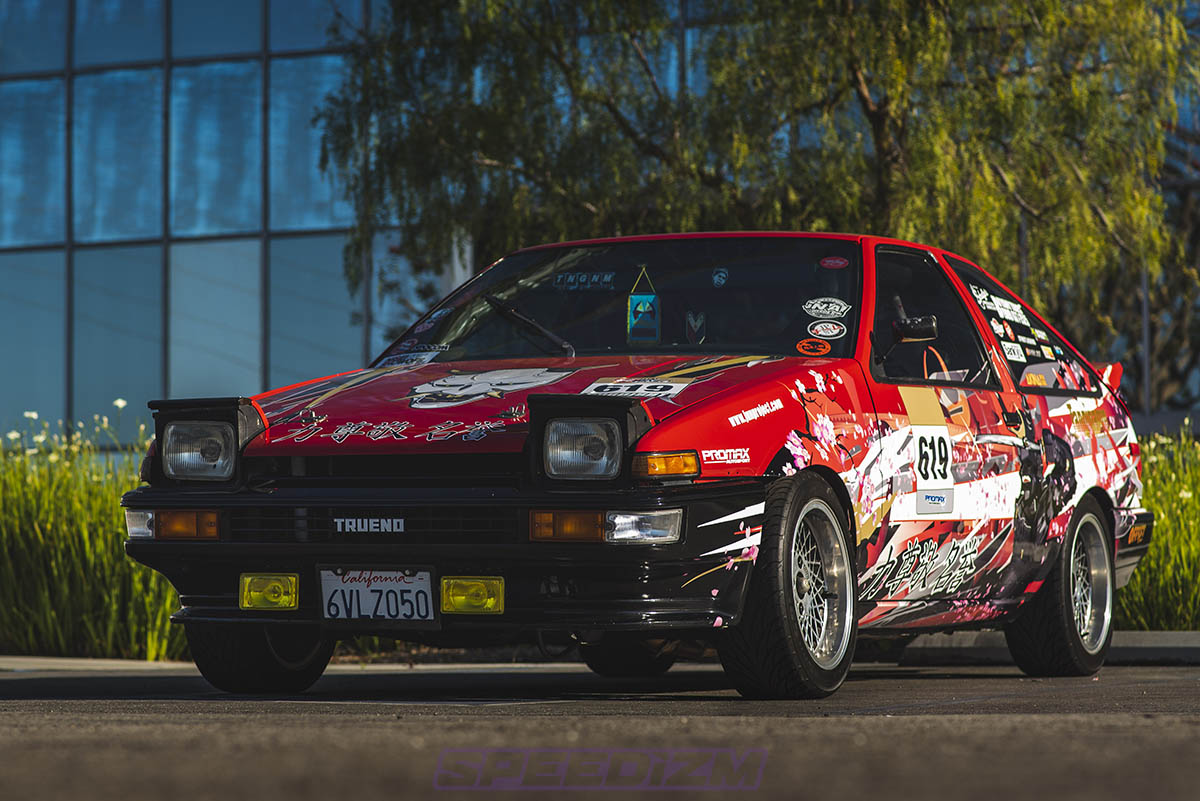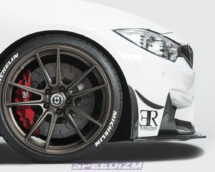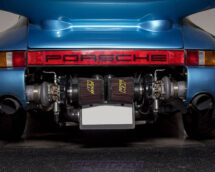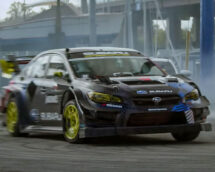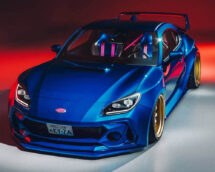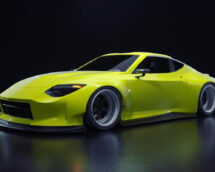An Overview of Alternatives When Professional Paint Isn’t in the Cards
There’s nothing quite like a car with “mile-deep” paint that’s lovingly applied, sanded, buffed, polished, and waxed to a mirror finish. Unfortunately, perfection comes at a price, and straight off the showroom floor, new cars affordable by mere humans often show noticeable flaws, and even intentional shortcuts like an “orange peel” finish on rocker panels to help hide future dings and scratches. The desire to fix those problems has spawned an entire industry devoted to selling you things that promise miraculous results with minimum effort – the enormous amount of shelf space devoted to car finish products in your average auto parts store is proof.

Now, add a decade or more of exposure to the sun, wind, rain, and even (heaven forbid) snow and salt, and the cars that make the most interesting projects often have factory paint that’s beyond saving. Sometimes it’s a clearcoat that’s peeling like an Irish redhead after spring break in Cancun. Perhaps it’s an oxidized color coat that no amount of Nu-Finish or rubbing compound can save. Maybe it’s modern art pinstriping from a lifetime of supermarket parking lots and automatic car wash wet-sanding. If a complete professional respray isn’t in the budget (or that money has already been allocated for mechanical upgrades) and you haven’t made peace with the ‘beater’ aesthetic embraced by so many, what can you do to change your car’s looks, and most importantly, make it seem like you wanted it to turn out like that?

Welcome to the world of oddball finishes! We’re going to take you through some of the many ways people have personalized their car’s exterior while keeping things tasteful, and dare we even say ‘attractive.’ Some are more time-consuming or costly than others, but they will all show that you put some effort into appearances, and if done correctly, they can protect your car’s sheetmetal from deterioration that will require extra cash and effort to fix should you decide to go with “real” paint later.
Ready for Prime Time
One of the most time-honored approaches is the ‘primered’ look, which dates back to the 1950s. We’re not talking about knocking back a skim coat of body filler over the dents and hitting it with a rattle-can blast, though – A good looking primer finish requires all-over rough-sanding whatever paint is left to give the primer something to adhere to, plus a careful de-solvent and tack cloth wipe. There are a lot of different options available, from aerosol cans to pre-thinned bulk primer ready to spray through an inexpensive air gun, and formulas with various levels of “build” to help level small imperfections.

Getting an even coat without the tell-tale stripes of a hasty spray can job can take some practice, but it’s possible, and primer is more forgiving than color coats. If your ultimate goal is to buy a case or two of gloss red spray cans for the final paint job, the primer step is a good place to get your technique perfected. One important note, though – while primer usually contains anti-rust components, it has little resistance to oils or solvents which will soak in and ruin any top coat you try to apply. If you plan on the primered look as your final goal, or will be driving the car between priming and the final paint, most manufacturers offer a primer sealer that will keep bug guts and road tar from ruining your hard work.

While we’re still in the rattle can aisle at the local big-box home improvement store, you’ll no doubt notice that thanks to about a billion Pinterest photos of DIY projects inflicted on estate sale dressers, there’s also a lot of different ‘faux’ finishes available, from marble-look to hammered metallic. Though most of these are going to look weird when applied to an entire car, you can pretty much guarantee that nobody else will be showing up at the local Friday night meet with a glow in the dark pale green hood. Yours truly once did an entire Sil-Forty in chalkboard paint and it turned out with surprisingly good results that could actually be written on and erased.
I’ll be Dipped
We’d be remiss if we didn’t mention the granddaddy of spray-bomb customization, generically known these days as “dip” but referred to in the industry as “peelable finishes.” From humble beginnings as a tall, skinny can of liquid rubber to dip tool handles, some unsung hero green-lit thinning it out and putting it in an aerosol can, and the rest is history. Once car guys discovered that not only could you use it to get a decent matte finish on things like wheels and side mirror housings, but if applied right you could also peel it off in big, satisfying sheets if you got tired of it without harming the paint underneath, the market exploded.

Originally available from one company in any color you wanted, as long as you wanted red or black, today every major paint manufacturer offers a peelable coating of their own in a rainbow of hues. Additional formulas have made the coatings more UV and weather resistant, and gloss top coat and even vinyl-based ‘gloss straight from the can’ peelables that rival normal automotive finishes are available.

The desire to do entire cars instead of just wheels and trim led to a market for conventional spray-gun formulas for the ambitious DIY’er as well as professional painters, but it’s still possible to get good results from an aerosol can with proper prep, masking, and technique. The main downsides tend to be related to adhesion; peelables applied over dirty or contaminated paint don’t stick well, and not applying enough coats can result in a nightmare when it’s time to remove them and they don’t come off cleanly.
Each One Adds Five Horsepower…
Speaking of adhesion, a JDM trend that hit hard at the turn of the century but has since faded into relative obscurity is “sticker bombing” your car. As the name implies, all that’s involved is slapping on adhesive labels – usually related to automotive aftermarket suppliers, but not always – to cover panel damage with a sensory-overload-inducing random pattern of colors and shapes.

At first glance, this seems like the simplest of all oddball finishes, but many have learned the hard way that it takes a dump truck full of stickers to cover an entire car, and a lot of free time to apply them. At the height of the craze there were a lot of Civics rolling around with two square feet of sticker bomb and an owner who didn’t realize the amount of commitment involved.

A well-done complete sticker bombing is an epic thing to behold, but for us mere mortals, it’s better suited to single panels like trunk lids, hoods, and fenders. Also take into consideration that a lot of stickers aren’t going to age well with constant exposure to sunlight and inclement weather. At some point, they’re going to have to come off, either still attached to the body panel on its way to the scrap pile, or via some serious physical effort or chemical assistance (aircraft paint stripper is like distilled evil in a bottle, but nothing cuts down to bare metal as well as it does.)

Everything Old is New Again
Last on our list is another trend that enjoyed widespread popularity for a time, then faded (pun intended) – the “patina” look. Originally inspired by rat rod culture, which celebrated unchecked rust and corrosion, patina became popular not just as the honest look of an unrestored car, but something deliberately applied. By applying strong chemicals like muriatic acid (most commonly used for cleaning neglected concrete pools) that not only actively destroy paint but actually etch metal and rapidly promote rust, then neutralizing them with a base like sodium bicarbonate solution when the desired result is achieved, any steel panel can be given decades of deterioration in minutes.

As you might imagine though, pool acid makes aircraft stripper look like sweet tea, and the process requires pretty substantial personal protective equipment and experience to do safely as well as proper consideration for things like runoff. Your neighbors are not going to be happy to see you washing foaming acid into the curbside storm drain. We cannot emphasize enough that this is not a job to be taken lightly, and it’s very easy to hurt yourself if you don’t know what you are doing.

Needless to say, it’s a one-way trip for any body panels that have been treated – no amount of body filler and sanding is going to bring them back to a paintable state. However, once the desired effect is achieved and the acid is neutralized, a couple coats of matte-finish clear will stabilize it and prevent further corrosion.
It’s worth noting that at the height of its popularity, the patina look ended up spreading to all sorts of late-model show cars, including ones with composite hoods, deck lids, and fenders. Of course, spraying a non-metal body panel with muriatic acid is an experiment that can only end in tears; there’s no steel there to rust, and most composites will just end up like that time you turned the oven on to preheat it and forgot the plastic cutting board was in there.

So how was that look achieved? Very careful, artistically-excellent airbrushing to match the patina on the steel panels. We won’t criticize anyone’s aesthetic choices; after all, the only person you have to please in the end is yourself. But it’s strange to see that particular style come full-circle from celebrating active neglect to imitating it at great effort and expense.

We’ve provided you with just a few suggestions on ways to personalize the look of your vehicle without the time and expense of a full paint job or professional wrap. Whatever you choose to do, the most important step is planning so that you end up with something you like, instead of something that says, “an attempt was made.” Look to others for inspiration, but don’t let mainstream tastes dictate what is and isn’t possible.

